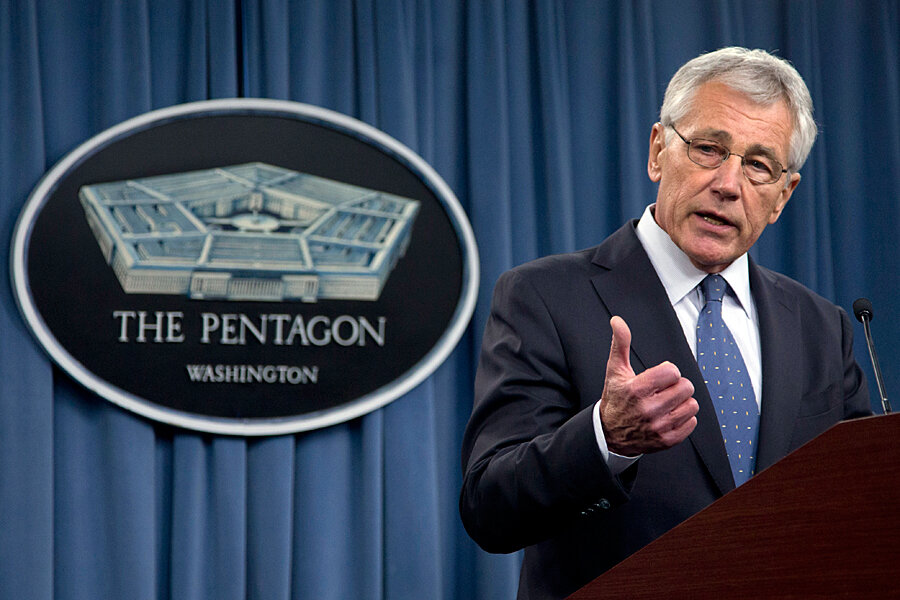Pentagon plan to downsize Army: a sign of US reluctance to nation-build
Loading...
| Washington
With Defense Secretary Chuck Hagel announcing Monday a historic downsizing of US ground forces, along with other cost-cutting measures, what does the move say about military priorities at the end of two long wars?
The new budget, if it were to be approved by Congress, will take the Army down to pre-World War II levels – a good idea given that the US military is not likely to be waging troop-intensive nation-building operations for some time to come, Secretary Hagel said during a briefing with reporters.
What’s more, “given the Army’s reliance on contractors to do things once performed by active-duty personnel,” these cuts do not “necessarily mean the Army will be less capable,” says Benjamin Freeman, policy adviser for the National Security Project at Third Way, a think tank in Washington, D.C. “Personnel numbers only tell one part of the story.”
Although reaction to the budget plan within the Beltway can tend to run toward the dire, particularly among defense contractors, “one doubts that the American public are terribly worried about a military that might be slightly less likely to get involved in unnecessary and counterproductive nation-building missions in distant lands,” argues Christopher Preble, a defense analyst at the libertarian Cato Institute think tank.
Under the budget plan for fiscal year 2015, the Army would decline from a post-Iraq high of 566,000 in 2011 to some 440,000 active-duty troops by 2019. The post-World War II low was 475,290 in 1999, Dr. Freeman notes.
“Given rapidly rising personnel costs, and the great political difficulty of reining them in, the only way to achieve actual savings may be a smaller active-duty force,” Mr. Preble adds.
That's in effect what Hagel is proposing. “Our recommendations favor a smaller and more capable force, putting a premium on rapidly deployable, self-sustaining platforms that can defeat more technologically advanced adversaries,” he said.
Even with the cuts, the Army still would be just above the force levels it had prior to 9/11. The proposed cuts, moreover, are not nearly as deep as the Army had contemplated during a strategic review last summer, notes Todd Harrison, senior fellow in defense studies at the Center for Strategic and Budgetary Assessments.
That signals that the Army and the Marine Corps are prioritizing higher numbers of troops over acquiring modern technology, he adds.
At the same time, the Navy will retain its 11 aircraft carriers, while the Air Force will continue to prioritize the F-35 fighter jet, the next-generation stealth fighter.
Rather than putting their money on higher force levels, the Navy and the Air Force are emphasizing high-tech modernization, Mr. Harrison says. “The real story here for me is this looks like a giant balancing act.”
Special Operations Forces would get a boost, too – from 66,000 troops today to 69,700 in the new budget. “Clearly, Special Operations Forces have been very effective in what we’ve been doing in Iraq and Afghanistan, and in terrorism operations around the globe,” Harrison says.
What is not included in the budget are the sequestration cuts already mandated by Congress, or the overseas continuing operations (OCO), which is where the Pentagon keeps the funding for the war in Afghanistan.
“The OCO has really become, frankly, a slush fund,” Freeman says, adding that defense analysts will be watching carefully when the Pentagon rolls it out, probably after the presidential election in Afghanistan in April.
But defense officials are eventually going to have to make some tough decisions on the cost of the war, or face the wrath of some lawmakers. Adds Preble: “If the Pentagon isn’t serious about confronting" the high cost of the war, as well as looming sequestration, "the resulting infighting could get ugly.”





